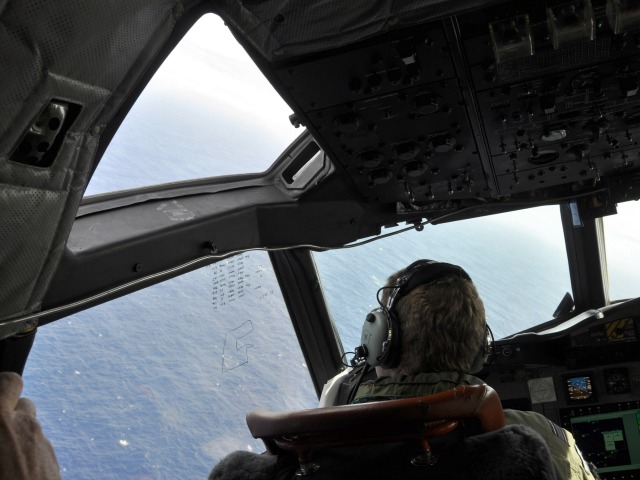A series of acoustic transmissions at the heart of the search for missing Malaysia Airlines Flight 370 are no longer believed to have come from the plane’s black box, a US navy official said on Thursday.
The Navy’s deputy director of ocean engineering Michael Dean told CNN there was now broad agreement that they came from some other man-made source unrelated to the jet that disappeared on March 8 carrying 239 people.
He said if the ping-emitting beacons, detected in early April, were from the onboard data or voice recorders they would have been found by now.
“Our best theory at this point is that (the pings were) likely some sound produced by the ship … or within the electronics of the towed pinger locator,” Dean said.
“Always your fear any time you put electronic equipment in the water is that if any water gets in and grounds or shorts something out, that you could start producing sound.”
He said it was not possible to absolutely exclude that the pings came from the black boxes, but there was no evidence now to suggest they did.
Asked by the broadcaster if the other countries involved in the search — which is being led by Australia — had reached the same conclusions, Dean replied “Yes.”
The US Navy pinger locator, dragged by the Australian ship Ocean Shield, was used by searchers to listen for underwater signals in the remote southern Indian Ocean in an area where satellite data indicated the plane went down.
A series of signals it picked up prompted Australian Prime Minister Tony Abbott to say he was “very confident” they were from the black box of the plane that vanished en route to Beijing from Kuala Lumpur.
It led to the deployment of a US mini-sub to scour the sea bed, but despite an extensive air, surface and underwater search, no sign of the jet has been found.
The underwater hunt by the US Bluefin-21 submersible had been due to end on Wednesday, May 28. The Joint Agency Coordination Centre (JACC), based in Canberra, had no immediate comment on Dean’s claims or the status of the search.
JACC officials have previously said that once the underwater hunt was over the operation would move to the next phase involving sophisticated equipment to scan the unmapped ocean bed.
A Chinese survey ship, Zhu Kezhen, is currently mapping areas of the sea bed in preparation for the commercially contracted deep ocean search.
JACC said last week a review and analysis of all the data and information relating to the likely flight path of MH370 was also underway.
Many relatives of those on board, who were mostly from China and Malaysia, have voiced frustration over the lack of progress towards finding out what happened and accused Kuala Lumpur on Wednesday of withholding crucial satellite data.
It followed authorities on Tuesday releasing a 47-page summary of communication logs from the plane recorded by British satellite operator Inmarsat, information that relatives and independent experts had long demanded.
“So much time has passed and nothing has been found, so we doubt that the calculated position of the plane is correct,” said Steve Wang, a spokesman for a support group of relatives of the flight’s 153 Chinese passengers.
Malaysia has insisted it is doing all it can in what is an unprecedented situation.
Relying in part on the Inmarsat data, officials believe the jet inexplicably veered off its flight path before crashing into the sea, possibly after running out of fuel.
The sketchy data was extrapolated using the Doppler effect — the change in frequency of waves from a moving object — to decipher the final flight path.

COMMENTS
Please let us know if you're having issues with commenting.